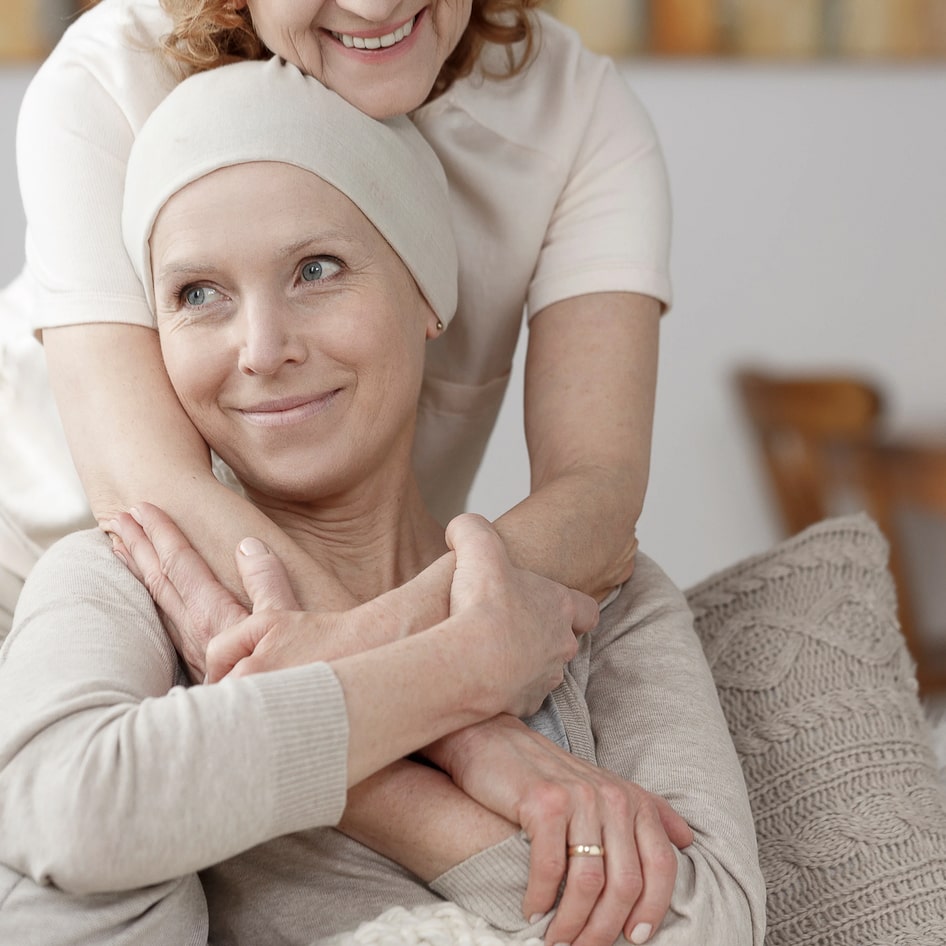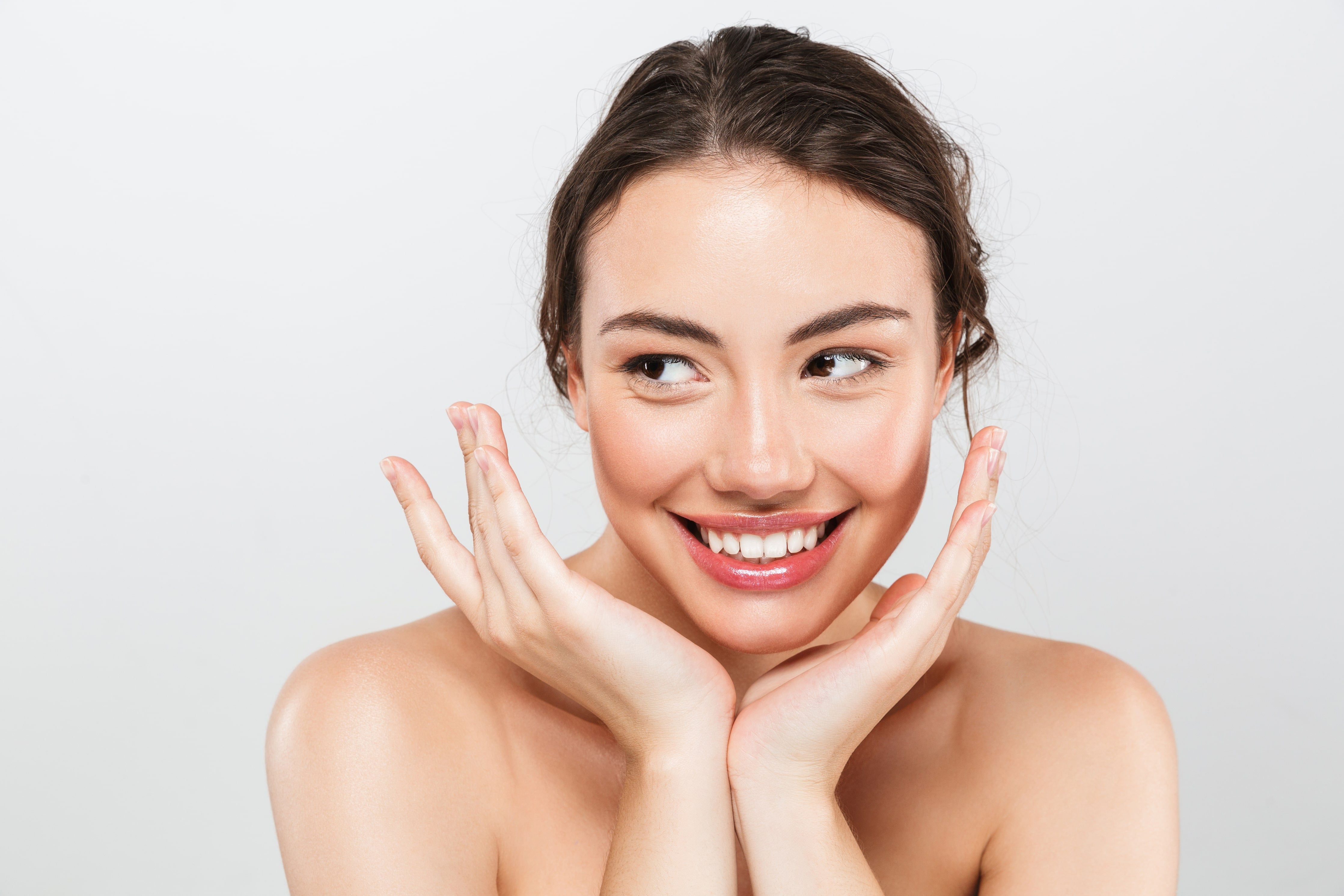Inflammaging: Causes and Solutions
INFLAMMAGING is a term developed several years ago to describe the slow but progressive aging process caused by a low level of chronic inflammation (often called “smoldering” inflammation). While the body’s normal inflammatory response is important for fighting infection, wound healing, getting rid of worn out and damaged cells and tissues, it’s designed to be of relatively short duration. However, when the inflammatory process does not go away after doing its job, but rather continues to persist, significant damage to the body can occur. Unfortunately, as we get older the level of continuous “smoldering” inflammation increases and the result is a slow erosion of normal cell structure and functioning, i.e. INFLAMMAGING. In regard to the skin, this age-related increase in inflammation results in many damaging changes to the skin including:
- Decreased dermal fibroblast growth and increased cell death resulting in thinner skin.
- Loss of Collagen I, III and VII production, which results in wrinkles, loss of elasticity and poor adhesion between the dermis and epidermis.
- Loss of GAG ( GlycosAminoGlycans), and particularly Hyaluronic Acid production in keratinocytes and fibroblasts, causing a loss of skin thickness, hydration and smoothness.
- Increase in MMP (Matrix MetalloProteinases: matrix destroying enzymes) production. These enzymes destroy collagen, elastin, laminin and other critical support proteins in the skin.
- Increased expression of PGE-2, an inflammatory hormone that causes skin damage and which is strongly linked to skin cancer and poor wound healing.
- Increased uneven hyperpigmentation resulting in discrete areas of dark spots on skin, called solar lentigenes, or simply “age spots”.
- Dehydration caused by thinning skin and by damage to the skin’s surface barrier (the stratum corneum) that becomes thin and cracked).
As you can see, the smoldering inflammation (INFLAMMAGING) that occurs in our skin every day as we get older causes almost all of the visible “aging” effects we see when we look in the mirror. Unfortunately, “INFLAMMAGING” is part of the normal aging process. And although protecting your skin from the harmful effects of sunlight can slow skin aging, even if you’ve spent your entire life protecting your skin from the sun, this age related “smoldering” inflammation is going to happen anyway! While it is true that genetics plays some role in determining how great the “smoldering” inflammatory response in our skin will be as we age, there is no escaping the reality that all of us will face the visible effects of some degree of chronological “INFLAMMAGING.
Although the cellular events that are responsible for inflammation-induced INFLAMMAGING are extremely complex, this review will hopefully provide a fairly thorough, yet understandable review of the events that occur in the skin as we get older and that cause the visible signs of skin aging. And based on this knowledge, this review will then suggest ways to help reduce the level of INFLAMMAGING as we get older. For those readers who would prefer a simple summary of INFLAMMAGING and are not interested in reading more detail about the science of skin inflammation and how this process causes skin aging, the following summary is provided.
SUMMARY OF INFORMATION IN THIS NEWSLETTER
- INFLAMMAGING refers to a progressive increase in chronic low level inflammation that occurs naturally in the body as we get older. This ever-present inflammation is often called “SMOLDERING” inflammation.
- This inflammation is responsible for many age-related diseases including cardiovascular disease, arthritis and even dementia. In the skin, inflammation causes a breakdown of the normal skin architecture, including: 1) a LOSS OF COLLAGEN and other structural proteins 2) a LOSS IN HYALURONIC ACID as well as other glycosaminoglycans including chondroitin, 3) SKIN THINNING, 4) breaks in the skin’s surface barrier resulting in WATER LOSS, 5) increase in enzymes (called MMPs) that destroy normal skin proteins, including collagen, 6) HYPERPIGMENTATION (“age spots”), and 7) increased risk of SKIN CANCER.
- INFLAMMAGING is the result of dysfunctional changes in primarily the INNATE immune system. Immune cells produce INFLAMMATORY MEDIATORS that are secreted into the skin and produce the destructive changes seen as we age (wrinkled skin, dry skin, cracked skin, uneven pigmentation, etc.).
- One of the major events caused by the dysfunctional immune system is the over-production of REACTIVE OXYGEN SPECIES (ROS). FREE RADICALS represent one type of Reactive Oxygen Species.
- One excellent way to reduce the level of skin INFLAMMAGING as we get older is to use skin care products that contain MULTIPLE ANTIOXIDANTS that can neutralize FREE RADICALS and block that activation of inflammatory events that damage the skin.
The Scientific Basis for Skin INFLAMMAGING
Simply put, INFLAMMAGING is the result of an aging and dysfunctional immune system. And to understand how this dysfunction causes skin aging, we need to learn about: 1) the normal skin inflammation process, 2) the immune cells that control the inflammatory process, and 3) what happens to your skin when this inflammatory process is NOT controlled.
Your Immune System and the Inflammatory Response
Your immune system was designed to provide two robust lines of defense against disease. These lines of defense are Innate Immunity and Adaptive Immunity. Your body’s innate immune system is a fairly non-specific, “early warning” defense system that recognizes foreign objects, or “‘pathogens”, like bacteria and viruses, and rapidly responds to rid the body of these invading organisms before they can cause serious harm. There are many cells that are part of the innate immune system, including macrophages, neutrophils, and dendritic cells, to mention just a few. All of these cells are present in your skin. These cells attack and destroy pathogens within hours of infection. They do this in two ways. First, the cells recognize the presence of particular types of molecules that are common to many pathogens, but which are not present in any cells of the body. These pathogen-specific molecules are like a “fingerprint” that identifies the invader as “foreign”. Macrophages, neutrophils and dendritic cells have receptors on their surfaces (called Toll-Like Receptors) that can bind to these pathogen-specific molecules. Once one of these immune cells binds to the pathogen, the invader is phagocytosed (internalized). Once inside, the immune cell will “kill” the pathogen by producing enzymes that break down the cell wall or other structure of the pathogen, and also by producing a variety of very toxic substances including FREE RADICALS and other Reactive Oxygen Species (ROS), such as superoxide (O2-) and hypochlorite (the active ingredient in bleach! ), which can destroy bacteria, viruses and anything else. Imagine what would happen to your skin if these toxic substances got out of the immune cells and into the skin!
In addition to engulfing and killing the pathogen, these cells also have another mechanism in place to deal with invading organisms. They produce and secrete a large number of INFLAMMATORY hormone-like substances (commonly called “mediators”. The purpose of these inflammatory mediators is to warn other cells in the skin of the ongoing pathogen “attack” so that they can also participate in the battle. In regard to the skin, the inflammatory mediators have many functions including:
- causing DILATION of blood vessels which increases blood flow to the area bringing additional immune cells to the infected area. This produces swelling and redness.
- causing circulating immune cells ( neutrophils and monocytes) to “stick” to the walls of the blood vessel adjacent to the site of infection, and migrate out of the circulation into the field of battle with their “weapons” of toxic chemicals (FREE RADICALS AND OTHER “ROS”) and destructive enzymes.
- activating skin cells, including keratinocytes and fibroblasts to produce and release more inflammatory mediators and 23 different potent enzymes (called MMPs) that can participate in cleaning the infected area of pathogens (but unfortunately, as we’ll see, can also destroy important structural skin proteins, including COLLAGEN, ELASTIN, LAMININ, FIBRONECTIN.
- increasing the production of FREE RADICALS AND OTHER “ROS” which then can kill invaders as well as trigger the production of more cytokines and enzymes to help in the fight against pathogens.
As you can see, the innate immune system does a great job of quickly attacking and killing pathogens before they can get into the blood stream and cause serious health issues.
But as good as the innate immune response is, there is a danger inherent in this protective system. If this inflammatory process is not carefully controlled, “runaway inflammation” can occur that can seriously damage normal tissues, and that “runaway inflammation” is what causes “INFLAMMAGING”.
As mentioned above, the immune system consists of both INNATE and ADAPTIVE immunity. Since INFLAMMAGING is largely due to dysfunction of the innate system, we’ll defer a detailed discussion of the ADAPTIVE system here and the interested reader can find more on this in a subsequent newsletter. However, to provide a brief overview, unlike the innate immune system, the adaptive immune system is very specific to the particular pathogen trying to infect the body. Because this immune response is “tailor-made” for each foreign invader, it takes more time to develop and is therefore slower to respond to an invading pathogen than is the innate system. While the innate response to a pathogen occurs within hours, the adaptive immune system takes about a week to mount a response. Continued exposure to the pathogen increases the immune response until it reaches maximum efficiency in about a month. The immune cells of the adaptive immune system are T and B lymphocytes, and each of these plays a specific role in immune protection. It is the Adaptive Immune system that provides long-term protection from disease and is the immune response that vaccines use to provide long-lasting immunity.
The Skin Environment Changes As We Get Older Causing Chronic, Uncontrolled Inflammation
As we get older, the efficiency of both the INNATE and ADAPTIVE immune systems declines and this leads to less protection against invading organisms and disease. It also leads to less “monitoring” of changes in cells within the body and this loss of surveillance can lead to cancer cells going undetected. Since INFLAMMAGING is largely due to inflammatory signals produced by the INNATE immune system, we will focus on what these changes are and how they cause “smoldering” inflammation and skin aging.
First of all, we should not blame the innate immune system entirely for the increase in smoldering inflammation that causes INFLAMMAGING. There are many factors that trigger this destructive inflammatory process as we get older. Let’s see what they are.
- INEFFICIENT CELL DEBRIS CLEARANCE TRIGGERS INFLAMMATION. As we go thru life the cells of our body are constantly dying and having to be replaced. Ordinarily this replacement process is very efficient. Phagocytes engulf and destroy the old dead or dying cells and degrade the cells into components that can be reused. However, as we age, this dead cell removal process becomes less efficient and cell debris, including fragments of proteins that were incorrectly made because of age-related mutations of our DNA, start to accumulate. As we learned above when talking about the innate immune system, the presence of unknown molecules, like these broken down fragments, activates immune cells like macrophages and dendritic cells who think they are being attacked by a pathogen. That triggers an inflammatory response in the skin resulting in the production of inflammatory mediators such as IL-1, TNF-alpha, IL-6, PGE-2. These inflammatory cytokines:
- BLOCK COLLAGEN PRODUCTION
- BLOCK ELASTIN PRODUCTION
- INCREASE MMP PRODUCTION (MMPs are 23 different enzyme that destroy collagen, and other critical structural proteins in the skin.
- TRIGGER THE PRODUCTION OF ROS, and these free radicals activate MORE inflammatory pathways that produce MORE cytokines that suppress collagen production, while at the same time stimulating the production of MMPs that destroy collagen.
- INCREASE abnormal skin cell growth leading potentially to skin cancer and melanoma.
- SKIN PRODUCES HIGH LEVELS OF FREE RADICALS (and ROS: REACTIVE OXYGEN SPECIES). Free Radicals are produced by aging macrophages , neutrophils, and other immune cells. These molecules trigger the production of inflammatory mediators and this leads to
- DESTRUCTION OF COLLAGEN AND ELASTIN
- THINNING OF THE SKIN
- DAMAGE TO THE SKIN’S BARRIER LEADING TO WATER LOSS
- DESTRUCTION OF THE CONNECTION BETWEEN THE EPIDERMIS AND DERMIS leading to loose skin, skin rupture, and increased infection.
- RECRUITMENT OF MORE IMMUNE CELLS FROM THE CIRCULATION thereby increasing he inflammatory response
- HEALTHY CELLS ENTERING INTO SENESCENCE ( a dormant state that leads to cell death).
- HEALTHY FIBROBLASTS GOING INTO SENESCENCE at which point they stop making collagen and begin making MMPs!
- AGING CELLS HAVE INEFFICIENT ENERGY PRODUCTION RESULTING IN HIGH FREE RADICAL AND ROS LEVELS. Aging cells, including immune cells, fibroblasts, and keratinocytes develop inefficient energy production. Their “old and wornout” mitochondria, the source of energy in the cell, begin to produce excess free radicals (ROS), that ordinarily the cell could inactivate but because the cells are older, they can’t. The ROS produced attacks the cell’s DNA, causing mutations that ultimately trigger the cell to die. The excess ROS also triggers the production of inflammatory mediators as discussed above.
This is probably more information than is really needed to make the point that INFLAMMAGING is a never ending circular process where inflammation triggers more inflammation that damages and ages the skin!
Is there anything we can do to slow INFLAMMAGING? YES!
As you can see from the above information, one of the MAJOR causes of INFLAMMAGING is the high level of FREE RADICALS (ROS) produced in older skin. One of the best ways to fight INFLAMMAGING is to:
LOWER THE LEVEL OF FREE RADICALS IN YOUR SKINBY“BATHING” YOUR SKIN IN ANTIOXIDANT RICH SKIN CARE PRODUCTS
Antioxidants inactivate free radicals and protect skin from irreversible damage. By inactivating free radicals and ROS, antioxidants can ARREST the ongoing inflammatory process and reduce the level of smoldering inflammation. A skin care product that does not contain multiple antioxidants will never provide the protection from free radicals that aging skin needs to maintain a youthful, healthy appearance late into life. In fact, the earlier that antioxidant based skin care products are used, the better your skin will look later in life. While there are many products on the market that have a single antioxidant like vitamin E or vitamin C in them, to get maximum protection from FREE RADICAL damage select products that contain multiple antioxidants that cannot only inactivate free radicals, but can also block the inflammatory processes that Free Radicals stimulate. These unique “bi-functional” antioxidants (also called “super antioxidants”) provide the best solution for fighting INFLAMMAGING.
Below is a cartoon that shows just a few of the inflammatory events that occur in skin that are caused by ROS (free radicals). As you can see, it’s pretty complicated!
All DermaMedics products contain “bi-functional” antioxidants (“super antioxidants”) that were discovered by DermaMedics scientists conducting research at a major university medical school. These unique antioxidants have been patented worldwide and can only be found in DermaMedics products. The products below will provide excellent antioxidant protection against free radicals and ROS that increase in the skin with age and which are responsible for the “smoldering” inflammation associated with INFLAMMAGING.
RECOMMENDED PRODUCTS TO REDUCE FREE RADICALS

10X Defense Body Oil
10X Defense Restore and Revitalizing Oil FIGHT DAMAGING FREE RADICALS with DermaMedics’ patented “super-antioxidant” complex fortified with 10 high potency antioxidants and 7 natural skin nurturing oils.DermaMedics’ patented Therosol® antioxidant together with 9 other antioxidants inactivate free radicals and prevent them from triggering destructive inflammatory events. 10X Defense Restore and Revitalize Oil is designed specifically to inactivate skin damaging

Restorative Serum
Restorative Serum (with Vitamin C) contains 3 patented, high potency “bi-functional” antioxidants (“super antioxidants”) blended together with skin friendly natural oils and a unique form of vitamin C into a gentle silicone based serum that can be used on even the most sensitive skin. Restorative Serum utilizes DermaMedics' proprietary "bioactive phase delivery" technology to deliver these high potency FREE RADICAL fighting ingredients to the skin at high concentration. This gentle moisture-retaining formulation is non-comedogenic, and preservative-free.

Intensive Relief
Intensive Relief Lotion has been specifically formulated to soothe, re-hydrate and reduce the appearance of redness in skin stressed by environmental “stressors” such as sun exposure and pollution . This lotion contains very high levels of DermaMedics’ patented “super antioxidant”, Therosol® to fight free radicals triggered by harsh environmental conditions and to calm and soothe even very sensitive skin. Excellent for problem skin.






